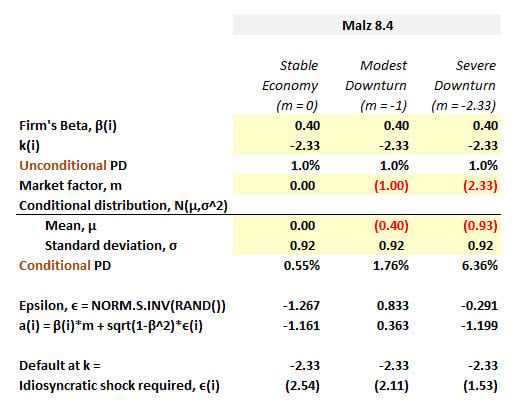saurabhpal49
New Member
hi David,
Could you please explain the below mentioned sentence
Given m a realization of Ei less than or equal to Ki - Bim triggers default. As we let m vary from high to low values a smaller idisyncratic shock will suffice to trigger default
Could you please explain the below mentioned sentence
Given m a realization of Ei less than or equal to Ki - Bim triggers default. As we let m vary from high to low values a smaller idisyncratic shock will suffice to trigger default

